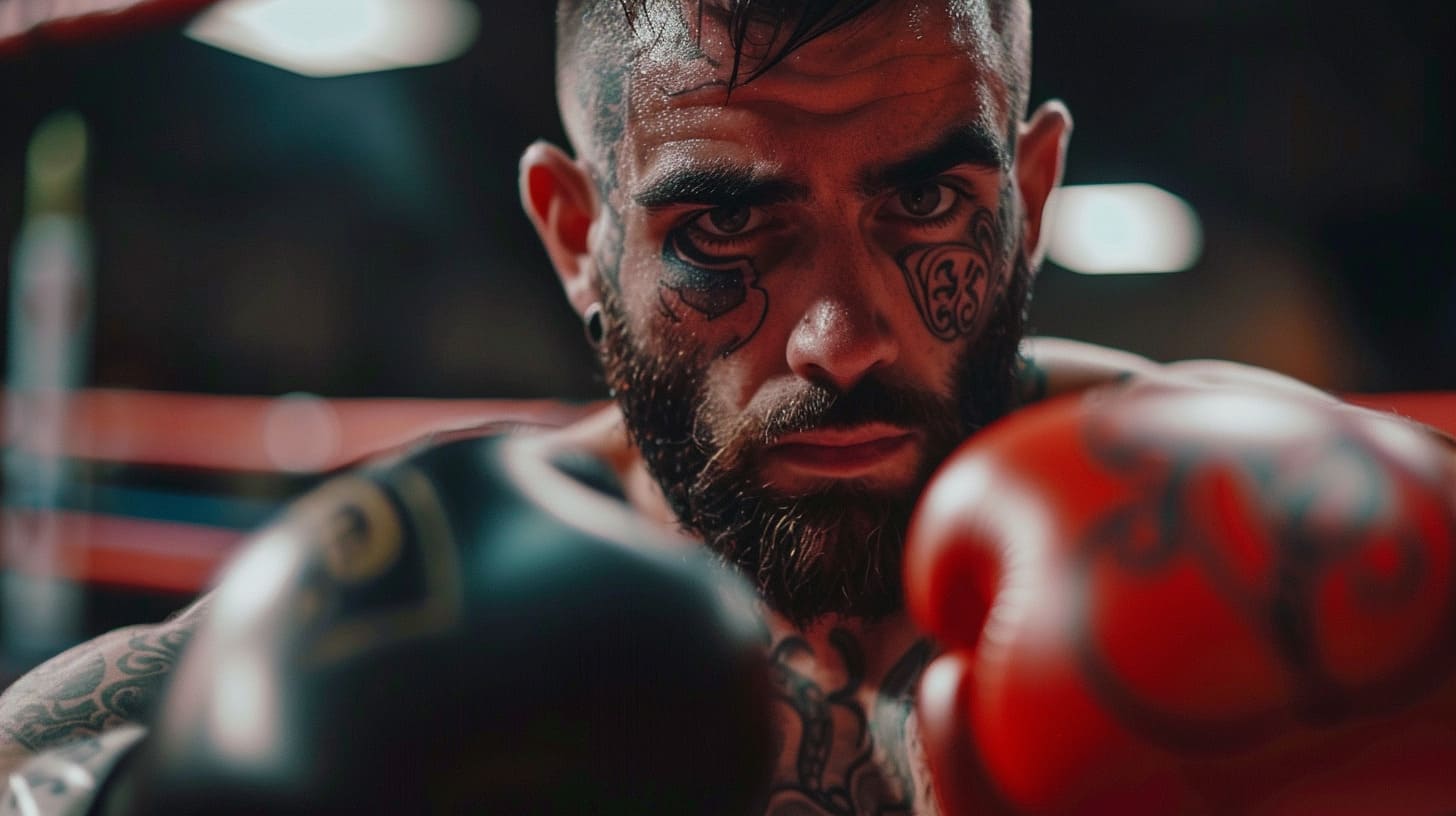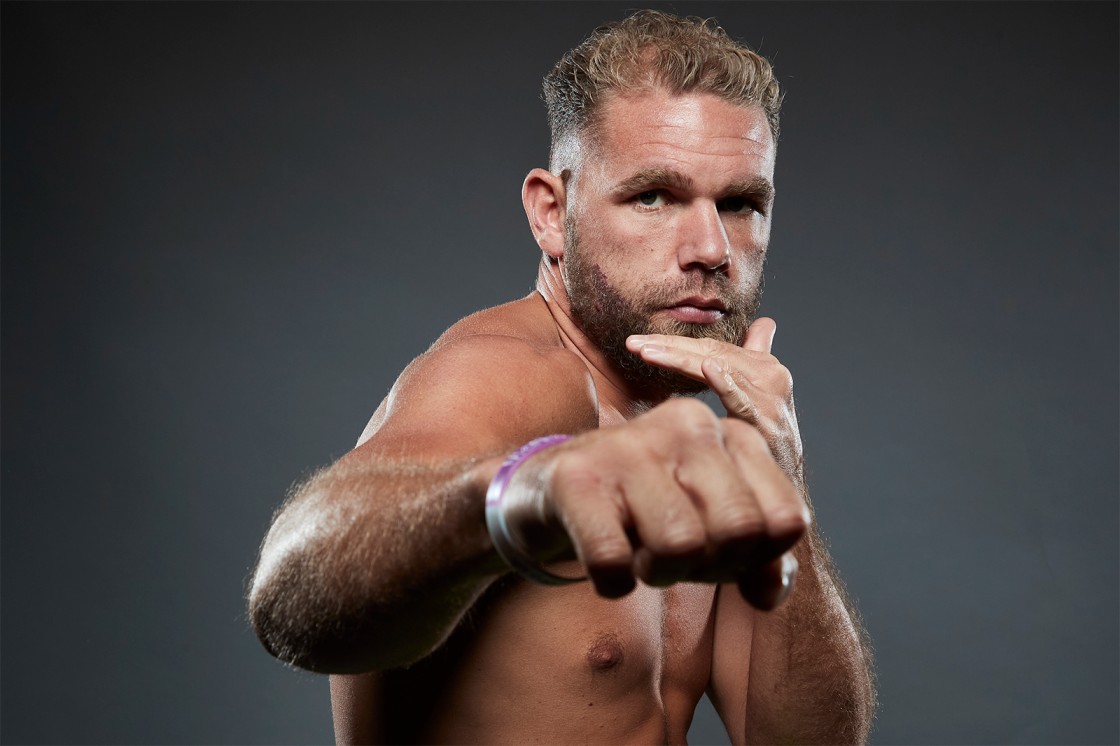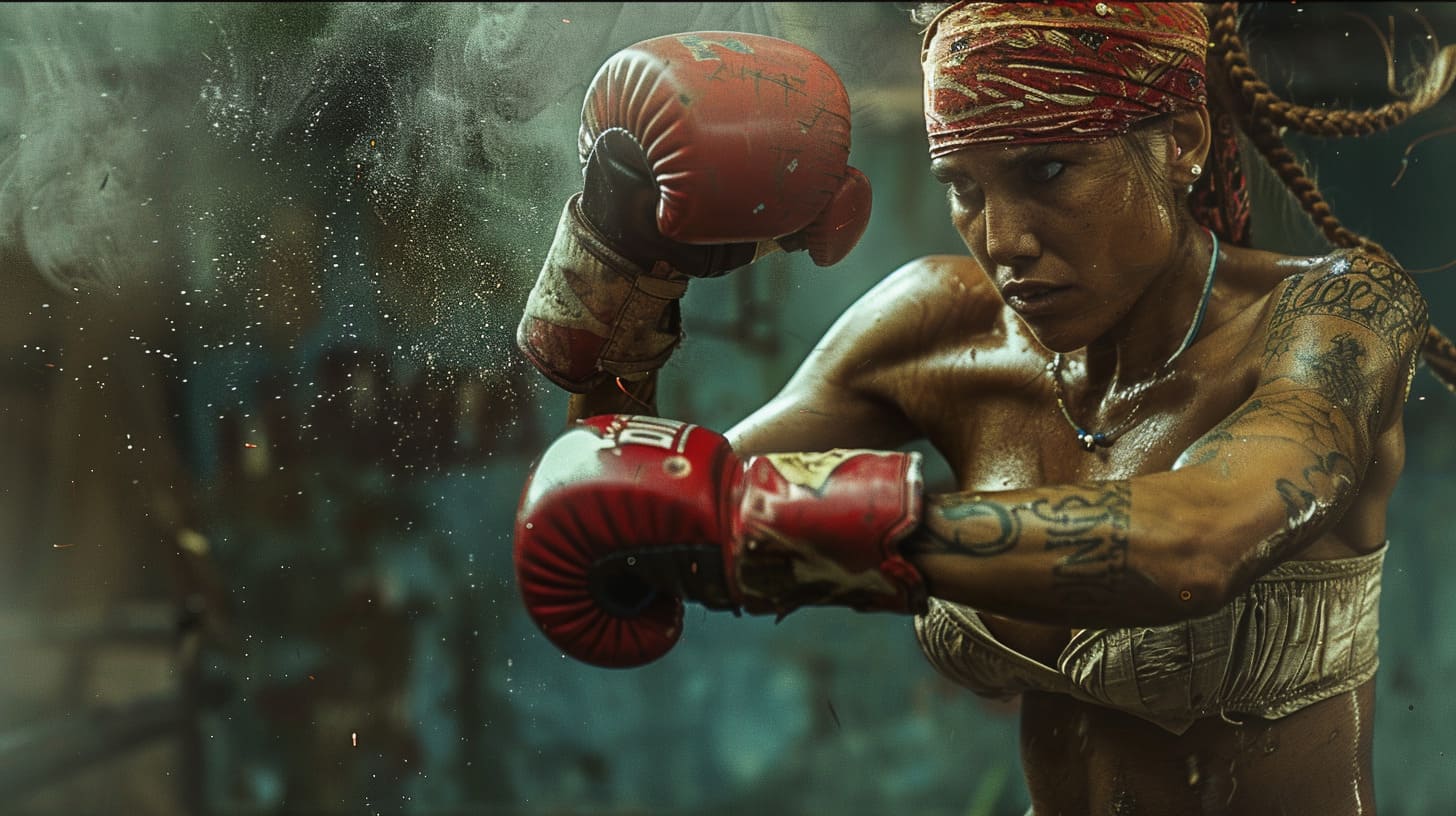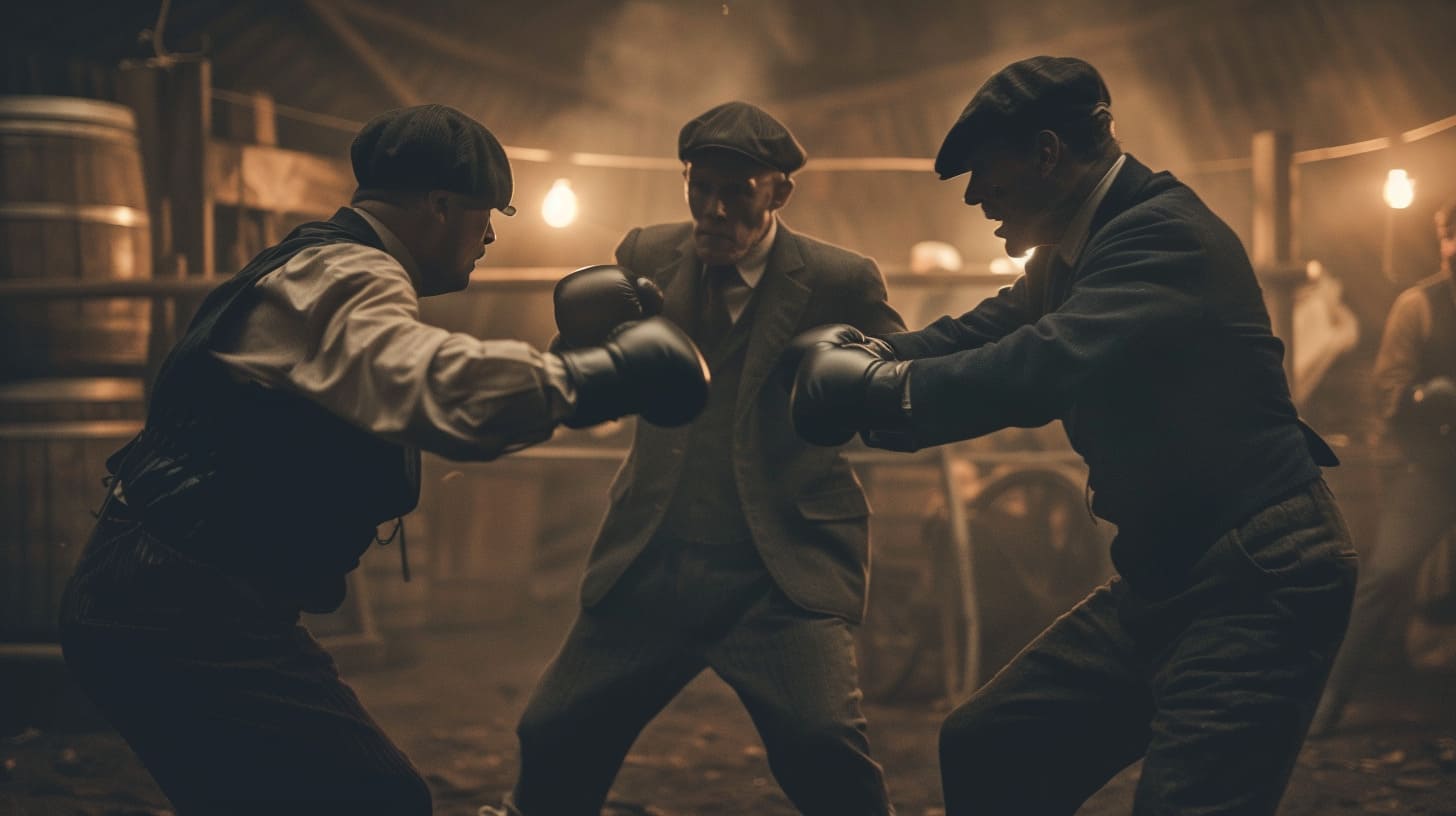Gypsy Boxing Style, also known as “Bare-Knuckle Boxing,” holds a legendary status in the world of combat sports, noted for its rawness and the gritty resilience of its fighters. It’s a blend of traditional boxing with its own unique, unorthodox twists, reflecting a rich cultural heritage and a storied history deeply rooted in the traveler communities. With tactics that emphasize toughness and the ability to adapt swiftly, this style has piqued the curiosity of boxing enthusiasts around the globe. Let’s delve into the world of Gypsy Boxing and uncover what makes this fighting technique as captivating as it is formidable.
What is Gypsy Boxing Style?
Ever heard of the Gypsy boxing style and wondered what makes it unique? This bare-knuckle brawler’s technique is steeped in a rich, cultural tapestry and relies on instinct as much as skill. Let’s break down what sets this fighting form apart from your standard boxing fare.
Core Principles and Techniques
At the heart of Gypsy boxing lies a set of core principles that define its approach:
- Adaptability: Fighters are taught to adjust their style on the fly, responding to their opponent’s tactics with fluidity.
- Toughness: Embracing a rough and ready attitude, Gypsy boxers typically exhibit a high pain threshold and stamina.
- Family Tradition: Often passed down through generations, this fighting technique is a matter of pride and heritage.
Signature Techniques
- Unpredictable Rhythm: Gypsy boxers often incorporate irregular rhythms into their footwork to confuse opponents.
- Bare-Knuckle: While not a technique per se, the lack of gloves influences the way fighters strike and defend.
Stance, Footwork, and Guard
- Stance: The Gypsy boxing stance can appear unconventional, with fighters often standing in a more square position compared to classic boxing stances.
- Footwork: Agility is key, with quick, nimble steps designed to create angles and evade strikes.
- Guard: Guards may vary, but many fighters use a high guard to protect the face while allowing for quick counters.
This style’s stance, footwork, and guard work in harmony to form a unique approach to combat. Now, how does Gypsy boxing differ from conventional techniques?
Contrasts with Conventional Boxing
| Conventional Boxing | Gypsy Boxing Style |
|---|---|
| Formal stance | More square stance |
| Predictable rhythm | Irregular rhythm |
| Standardized guards | High, variable guards |
| Gloved fighting | Bare-knuckle emphasis |
In the ring, these differences in technique, stance, and philosophy are plain to see. Gypsy boxing emphasizes personal flair and unpredictability—a stark contrast to the regimented structure of traditional boxing. This makes for a raw, exciting fighting experience that draws fans who appreciate a touch of spontaneity in the sweet science of boxing.
Signature Moves & Strategies

When you hear about the Gypsy boxing style, it might conjure up images of raw, uncompromising bouts that tap into a deep well of tradition. Let’s dive into the unique elements that make this style stand out in the ring.
1. Elusive Footwork
Gypsy boxing is synonymous with slick movement. The ability to glide around an opponent as if dancing to a rhythm only they can hear is captivating.
- Key Benefit: This constant motion makes it tough for opponents to land clean shots, as the fighter is rarely in the same place for long.
- Real-Life Example: Tyson Fury, with his Gypsy King moniker, exemplifies this approach. He uses his footwork not only to evade but also to create offensive opportunities, often leaving his adversaries swinging at shadows.
2. Unorthodox Angles
Throwing punches from unconventional angles is a hallmark of the Gypsy boxing style—expect the unexpected.
- Key Benefit: It disrupts the rhythm of traditional boxers who are used to a certain combat structure. This can lead to openings that wouldn’t exist in a more orthodox fight plan.
- Real-Life Example: Billy Joe Saunders often employs these surprising angles to outfox opponents, executing punches that seem to come out of nowhere and catching adversaries off guard.
3. Psychological Warfare
Mental toughness and a sharp tongue can be as disorienting as a good left hook in Gypsy boxing.
- Key Benefit: By getting into the heads of their opponents before and during the fight, boxers from this background can dictate the pace and emotional tempo of the bout.
- Real-Life Example: Fury is again a prime example; his pre-fight banter and in-ring antics can break the concentration and will of the person across from him, leading to crucial mistakes that he capitalizes on.
Understanding these techniques is like getting a glimpse into the boxing equivalent of a magic show—where every move and every word is part of the act, designed to keep you guessing and the opponents on their toes. By mastering elusive footwork, unorthodox angles, and psychological warfare, Gypsy boxers turn the squared circle into their stage, and each fight into a performance that’s as strategic as it is entertaining.
Challenges and Limitations

Before you go lacing up your gloves and jump into the ring gypsy style, it’s wise to know the hurdles you might face. This unorthodox approach to boxing has its quirks, and understanding them could mean the difference between raising your arms in victory or learning a tough lesson in the school of hard knocks.
The Benefits of the Gypsy Boxing Style
When it comes to the gypsy boxing style, it’s all about that razzle-dazzle—it has some flashy benefits that can leave opponents dazzled and confused. Here’s where this style really shines:
- Adaptability: Much like a street fighter, a boxer with this style can switch strategies on the fly, making them unpredictable and dangerous.
- Resilience: These boxers are often characterized by their sheer tenacity and the ability to absorb punishment while still moving forward.
- Unconventional Angles: Expect punches coming from all directions, often catching more traditional boxers off guard.
- Footwork: Their nimble footwork can create difficulties for opponents, allowing these boxers to control the ring.
- Endurance: More often than not, gypsy boxers are in it for the long haul, demonstrating impressive stamina round after round.
The Drawbacks of the Gypsy Boxing Style
Though the gypsy boxing style can be effective, it’s not without its achilles’ heel. Here are a few scenarios where a boxer employing this style might find themselves on the ropes:
- Disciplined Defense: Opponents with a tight guard and disciplined defensive tactics can negate much of the unpredictability.
- Counter-Punchers: Sharpshooters who can counter quickly may find success against the sometimes open and aggressive gypsy style.
- Technical Boxers: Those who stick to a strong technical game plan can exploit the less-structured approach of gypsy boxing.
- Ring Savy Opponents: Experienced fighters that know how to control the pace and the space of the fight can diminish the gypsy boxer’s advantages.
- Powerful Clinchers: Fighters adept at closing the distance and clinching can disrupt the flow and rhythm crucial to the gypsy boxing style.
While knowing the benefits and drawbacks can help you step into the ring with confidence, remember, it’s not just about the style—it’s about the heart, the grit, and the relentless pursuit of excellence every time you glove up. Whether you find yourself cornered or crowning, every fight is a chance to learn, to adapt, and to come back even stronger.
Defending Against Gypsy Boxing Style

Ever faced a boxer with a gypsy style and felt like you were trying to hit a shadow? That’s the elusive magic of the gypsy boxing style for you. With a strategic blend of unorthodox movements and intense agility, gypsy boxers can truly keep you on your toes. But don’t throw in the towel just yet! We’ve got some crafty tactics to help you stand your ground and defend like a pro.
Understanding the Unpredictability
The gypsy boxing style is like a curveball in the boxing world — catching many fighters off-guard. This style typically features erratic movements, constant changes in pace, and unexpected angles of attack. It’s crucial to stay calm and focused to keep up with their unpredictability.
Essential Defense Tips to Counter Gypsy Style
- Stay Light on Your Feet: Match their footwork with your own light and responsive movements. This gives you the agility to adapt quickly to their unpredictable style.
- Tight Guard: Maintain a tight guard. Gypsy boxers often seek openings with unconventional strikes, so a solid defense is key.
- Calm and Composed: Keep your cool. Frustration is the gypsy boxer’s ally, so stay composed and don’t play into their hands.
- Control the Distance: Use your jab to manage the space between you and your opponent. This keeps them at bay and disrupts their rhythm.
Additional Practical Tips:
Read Their Patterns: Every boxer, no matter how unorthodox, falls into patterns. Watch for repetitive movements or combos, and you’ll start to predict their next move.
Focus on Your Strengths: Capitalize on what you do best. If you’re a power puncher, look for that one clean shot. If you’re a technical fighter, use your precision to outmaneuver them.
Counterpunching: Train to be a sharp counterpuncher. Gypsy boxers often leave themselves open during their flurries; that’s your moment to strike.
Remember, no style is truly invincible, and with the right approach, you can turn the tables on any gypsy boxer that comes your way. Stay sharp, stay smart, and let your gloves do the talking!
Notable Practitioners
When we talk about the swagger and finesse of the gypsy boxing style, it’s impossible not to mention the pugilists who have etched their names into the annals of boxing history. Let’s dive into the lives of three such legendary boxers who have not just mastered this craft, but also shaped its very essence.
Tyson Fury

The man who needs no introduction, Tyson Fury, is often the first name associated with the gypsy boxing style. Born into a family with a rich boxing lineage, Fury’s rise to fame is a tale of resilience and combat prowess. He has become a contemporary icon for the style, exhibiting not only the physical attributes of reach and agility but also the psychological warfare and gamesmanship characteristic of the gypsy boxing tradition.
- Defining Moment: The world watched with bated breath as Fury, having overcome personal demons, climbed off the canvas against Deontay Wilder in their first bout, a testament to his unyielding spirit.
- Achievements: Claiming the unified WBA (Super), IBF, WBO, IBO, The Ring, and lineal heavyweight titles, Fury’s name is written among the stars in boxing’s heavyweight division.
- Contribution: Fury has brought gypsy boxing into the modern limelight, showcasing its effectiveness at the highest levels and inspiring a new generation of fighters.
Billy Joe Saunders

Another proud fighter hailing from the Romany gypsy community is Billy Joe Saunders. With a slick southpaw style and an impeccable defensive game, Saunders has demonstrated time and time again that he’s as elusive as a shadow in the ring. His footwork and head movement epitomize the finesse-based approach of gypsy boxing style.
- Memorable Fight: His masterclass against David Lemieux in 2017, where Saunders made a highly-touted puncher miss wildly, illuminated the defensive artistry of gypsy boxing.
- Achievements: Saunders has snatched titles in multiple weight divisions, including the WBO middleweight and super-middleweight belts.
- Contribution: Saunders’ adherence to tactical nous and boxing IQ helps keep the traditional aspects of the gypsy style relevant in the fast-evolving sport of boxing.
Andy Lee

Andy Lee’s story is not just one of triumph in the ring; it’s also a narrative that pays homage to the historical routes of gypsy boxing. With a potent blend of power and poise, Lee has harnessed his heritage to carve out a significant place in middleweight boxing lore.
- Defining Knockout: Known for his dangerous right hook, Lee’s comeback knockout of John Jackson remains a highlight reel standard, displaying the one-punch turnaround power synonymous with gypsy boxing’s unpredictability.
- Achievements: Capturing the WBO middleweight title in 2014, Lee solidified his position as one of the premier fighters of gypsy descent.
- Legacy: As both a practitioner and a trainer, Andy Lee has been a conduit for passing down the techniques and philosophy of gypsy boxing to future fighters.
Each of these boxers has not only left an indelible mark on the sport but also highlighted the rich cultural backdrop of the gypsy boxing style. Through their memorable fights and distinctive flair inside the ring, they’ve ensured that this fighting style remains etched in both history and the hearts of boxing enthusiasts around the world.
Training and Conditioning for Gypsy Boxing Style

Getting into the ring with the agility and resilience of a gypsy boxer doesn’t come easy. It’s all about the right blend of drills, discipline, and dynamic moves. Let’s dive into the training routines that can set you on the path to mastering this distinctive fighting style.
Embrace the Basics with Endurance
Building a strong foundation is key when training for any boxing style. For the gypsy boxing style, emphasizing endurance is a great starting point. After all, these fighters are known for their ability to go the distance.
- Road Work: Start your day with a morning run. Not only does this build your stamina, but it also gets your mind in the right place for the rest of your training.
- Jump Rope: A classic boxing drill, jumping rope enhances your footwork, speed, and timing. It’s all about being light on your feet and staying nimble.
Hone Your Skills with Specific Drills
Once your endurance is up to scratch, it’s all about sharpening those skills. Here’s where specific drills come into play, each one aimed at a facet of the gypsy boxing style.
- Sparring: There’s no substitute for getting in the ring. Controlled sparring with a partner helps you understand distancing and timing, which are crucial in this style.
- Bodyweight Exercises: Push-ups, pull-ups, and sit-ups fortify the core and upper body, building the strength needed to throw and absorb punches.
- Shadow Boxing: Perfect your technique and improve your footwork without the need for a punching bag or a sparring partner.
Focus on Flexibility and Reflexes
In the gypsy boxing style, being able to dodge and weave with ease is as important as landing punches. Improving your flexibility and reflexes should be a core part of your training.
- Yoga or Dynamic Stretching: Incorporate this into your routine to maintain muscle flexibility and prevent injuries.
- Reflex Bag or Speed Bag Work: These tools are great for improving hand-eye coordination and punching accuracy.
Strategies to Master Gypsy Boxing Style

Finally, there are strategies to imbue your practice with that elusive gypsy spirit. Here are a few to consider:
- Mental Toughness: Much of boxing is mental. Work on your focus and resilience. Meditation can be an excellent tool for this.
- Adaptability: Learn to adapt during a fight. The gypsy style is all about reading your opponent and changing tactics on the fly.
- Body Movement: Never be a stationary target. Continuous movement makes it harder for your opponent to hit you.
- Defense: A robust defense is as important as a good offense. Practice parrying and blocking to protect yourself from incoming blows.
Lace up those gloves and remember: consistency is your best friend on the journey to mastering the gypsy boxing style. Keep pushing your limits, and eventually, the ring will feel like home.
Final Thoughts
Wrapping up, the Gypsy Boxing Style isn’t just about the physical combat — it’s a cultural phenomenon. With its emphasis on adaptability, toughness, and unorthodox techniques, this style is a testament to the fighters’ heritage and spirit. It’s about bringing raw power, slick movement, and that unique fighting heart into the ring. For aspiring boxers looking to embrace this style, it requires dedication, willingness to embrace its gritty traditions, and, above all, respect for its deep roots. To those touched by its distinctive rhythm and resilience, Gypsy Boxing Style is more than just a method of fighting; it’s a living piece of history, a narrative of fighters who wear their hearts on their sleeves every time they step into the squared circle. Now go ahead, lace up your gloves, and keep the legend alive — who knows, you might just write the next chapter in the rich story of Gypsy Boxing.
Additional Resources
If you’re pumped about diving deeper into the “gypsy boxing style,” you’re in for a treat. The world of boxing is rich with literature, media, and online resources that can take your understanding from a beginner’s jab to a professional’s knockout punch. Here’s a curated list of resources that will help you soak up more knowledge on this fascinating topic.
Books
A good book can be like a trusted coach. Here are a couple that’ll do more than just gather dust on your shelf:
- “Gypsy Boy” by Mikey Walsh – While not a boxing manual, Walsh’s autobiography provides heartfelt insights into the life of a Romany gypsy and his personal journey with boxing. Get it on Amazon.
- “Bare Knuckle” by Bartley Gorman & Peter Walsh – The autobiography of Bartley Gorman, who hailed from the Traveller community and was known as the ‘King of the Gypsies’, covers his life and exploits in bare-knuckle boxing. Go to Amazon.
Videos & Documentaries
When reading doesn’t cut it, watching a story unfold can be just as educational:
- “Knuckle” (2011) – This gritty documentary follows a series of bare-knuckle fights between rival families in the Traveller community, providing a raw look into their fighting tradition. Watch the full documentary on YouTube.
- “Gypsy Kids: Our Secret World” – Offers a glimpse into the lives of Romany gypsies, which often includes a focus on their boxing culture. Find episodes on YouTube.
Websites
There’s a whole world on the web offering a wealth of information:
- BoxRec – Not a direct resource on gypsy boxing, but great for researching boxers with a Romany or Traveller background. Visit BoxRec.
Remember, whether you’re looking to get serious about training or just want to appreciate the rich cultural tapestry behind gypsy boxing style, these resources are your ticket to a front-row seat. So, lace up your gloves, and get ready to explore the world of gypsy boxing with these additional resources as your guide.

